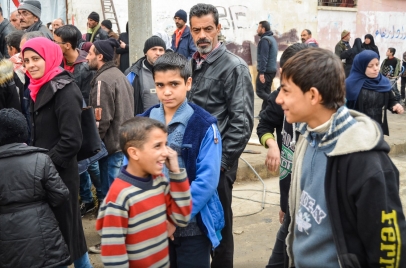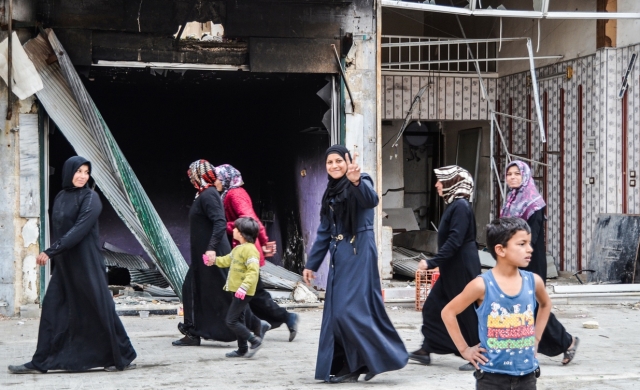Feb 28
20179
Amnesty International, Human Rights Watch, Humanitarian Agencies, Imperialist Wars/Occupations, The International Campaign to Destabilize Syria, Whiteness & Aversive Racism
Amnesty International Human Rights Industrial Complex Human Rights Watch Iran Libya Russia Syria Turkey
Human Rights Industry Protects Imperialism
February 15, 2017
by Margaret Kimberley
Humanity is in desperate need of individuals and organizations to speak up for their right to live free from the threat of state violence. Instead we have a human rights industrial complex which speaks for the powerful and tells lies in order to justify their aggressions. Amnesty International and Human Rights Watch are at the top of this infamous list. They have a pattern and practice of giving cover for regime change schemes hatched by the United States, NATO partners and gulf monarchies like Saudi Arabia.
Amnesty International recently released a report “Human Slaughterhouse: Mass Hangings and Extermination at Saydnaya Prison Syria” which claimed that the Syrian government executed between 5,000 and 13,000 people over a five-year period. The report is based on anonymous sources outside of Syria, hearsay, and the dubious use of satellite photos reminiscent of Colin Powell’s performance at the United Nations in 2003. There is plenty of hyperbolic language like “slaughterhouse” and “extermination” but scant evidence of the serious charges being made.
Human Rights Watch joined the fray just days later, with claims that the Syrian government used chlorine gas against civilians fleeing Aleppo. Once again, the claims had little evidence, just mud thrown against a wall in the hope that some of it will stick. It is the al Nusra front which attacked the Aleppo refugees as they struggled to get within the Syrian army lines. One day there is a report on execution, another day chemical weapons, barrel bombs the next day and so on. These phony organizations never mention that the humanitarian catastrophe in Syria was brought about by western intervention and its head chopping jihadist allies.
The Syrian war isn’t over, but that government and its allies are winning and they will determine the future of that nation. It is Russia, Turkey and Iran who are convening peace talks between Syria and the opposition and that is why the effort to discredit them goes on.
Beginning in 2011 the United States used a tried and true method of getting support for imperialism. A foreign leader is accused of being a tyrant who terrorizes his nation. The claims silence critics, get buy in from corporate media and cynical politicians and ultimately lead to death at the hands of the so-called saviors. There are 9 million Syrian refugees precisely because of collusion between the west and its gulf monarchy allies. The suffering of the civilian population is the fault of these parties and it is only the determination of the Syrians and help from their allies which prevented it from going the way of Libya.
Now that the jihadists are on the run and their one-time backer Turkey has switched sides, the jig is up. But the imperialists will not go away quietly. That is why Human Rights Watch and Amnesty International reappear at a crucial moment.
New president Donald Trump is quite literally a wild card. During his campaign he claimed he would not support regime change but his personality and policy are erratic. It is never clear what he means or wants. His staff are equally amateurish and the direction of American foreign policy is anyone’s guess. One day he wants better relations with Russia and the next he makes a futile demand that it return Crimea to its neo-Nazi overlords. But republicans and democrats in the war party are quite clear on their plans. They are not giving up in their quest for hegemony and they need all the credibility they can get. Enter Amnesty International and Human Rights Watch to provide propaganda at just the right moment.
If they were at all serious in their stated goal of giving voice to the abused, they could use their ample resources to criticize the United States domestically and around the world. When president George Bush instigated the invasion or Iraq in 1991 they repeated the fable of soldiers killing babies in incubators. They never explained or apologized for their actions. They continued their awful partnership in 2011 when they provided cover for the Obama administration’s attack on and destruction of Libya.
Neither organization will denounce the American carceral state, the world’s worst. They might attack the modern-day police slave patrol which kills three people every day. They could ask why the United States has an implicit right to decide that Libya or Syria or Somalia can be destroyed and their populations be forced to suffer. But taking on those issues would be in defiance of their true mission, creating the conditions necessary to allow the United States to commit aggressions without fear of public opposition.
Amnesty International and Human Rights Watch are not friendly to the people of the world. They pick on the weak and the targets of imperialist attack and tell lies on behalf of those who violate human rights on a mass scale. Despite playing a lead role in the Syrian disaster, the United States was invited to be an observer at the upcoming peace talks. Enter AI and HRW to help make sure that if the Trump administration should participate, it won’t be making any changes they need worry about. The human rights industrial complex is dependably on the side of the evil doers and their dirty deeds.
[Margaret Kimberley’s Freedom Rider column appears weekly in BAR, and is widely reprinted elsewhere. She maintains a frequently updated blog as well as at http://freedomrider.blogspot.com. Ms. Kimberley lives in New York City, and can be reached via e-Mail at Margaret.Kimberley (at)BlackAgendaReport.com]





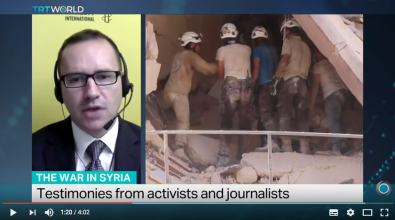 As far as I can tell, the fresh evidence advertised in the report was gathered through conversations and tours Rovera had in those weeks.
As far as I can tell, the fresh evidence advertised in the report was gathered through conversations and tours Rovera had in those weeks.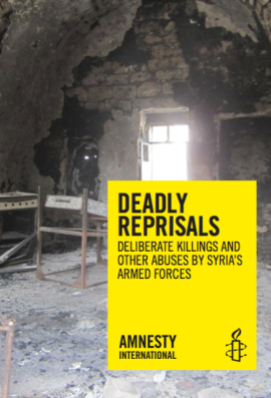

















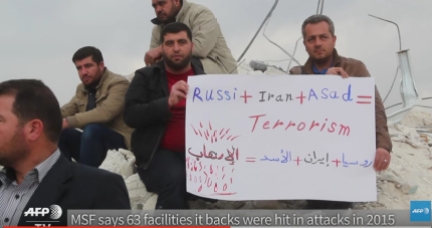
 it is generally believed that they work closely with terrorist organisations (how else could the Netflix documentary have shown them roaming so freely in a zone where MSF and Western journalists dared not set foot?
it is generally believed that they work closely with terrorist organisations (how else could the Netflix documentary have shown them roaming so freely in a zone where MSF and Western journalists dared not set foot?